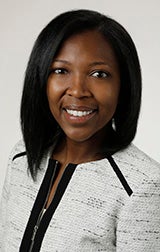Celebrating the History of American Sign Language
April 21, 2023American Sign Language (ASL) is one of approximately 300 sign languages used worldwide and is the primary language of half a million people in the United States. According to the Fresno Deaf and Hard of Hearing Service Center, there are over 170,000 deaf and hard of hearing people living in the Central Valley. ASL is the fifth most-requested language for interpretation at Valley Children’s Hospital. National Deaf History Month in April provides an opportunity to honor the history of the deaf community and to highlight the importance of inclusivity and access for everyone.
American Sign Language originated in the early 19th century shortly after the establishment of the American School for the Deaf, the first school in the United States to provide formal education for deaf students. ASL developed from a mixture of French Sign Language (SLF) and signed English. Within a generation, ASL became the primary language of instruction in schools for the deaf. The creation of more schools for the deaf followed, and through the use of ASL, an increasing number of deaf individuals became teachers and faculty themselves.
Beginning in the late 1800s, there was a movement away from ASL towards oralism, or communication through lip-reading and production of speech. This method, which followed European trends, grew from concerns that sign language would interfere with oral skills and deaf people’s ability to take part in "mainstream" society. ASL was effectively banned and no longer viewed as a valid mode of communicating. The oralist model excluded many deaf individuals as educators because it required the ability to instruct speech and lip-reading. ASL had allowed deaf people to play a prominent role in education within their community, which had now been lost with the advent of oralism.
During the Civil Rights Movement of the 1960s, many deaf people began to advocate for rights, including greater input in deaf education. It was also found that a century of oralism had resulted in significantly lower reading comprehension and literacy among deaf individuals. Linguist William Stokoe advocated for the use and study of ASL and demonstrated that it contains all of the classifying structures of any spoken language. ASL also holds valuable cultural significance, as integral to the identity of many deaf people as Spanish or Hmong is to many of us. Deaf people around the world use many other forms of sign language, and English is a second language for many deaf Americans.
When communicating with a deaf or hard of hearing person, it is important to ask how they wish to communicate; some prefer to sign, while others may choose to write. Many deaf people read lips. However, even a skilled lipreader typically understands only 25-30% of a conversation, so this is often not enough on its own. It is also important to:
- ensure good lighting, maintain eye contact and eliminate any background noise
- speak clearly and enunciate
- if you know any signs, use them
- establish the topic of discussion (this helps a deaf person to use context clues)
- have individual speakers speak one at a time
- repeat important or challenging concepts
- don’t give up if misunderstandings occur
Many deaf and hard of hearing people are visually-oriented, so gesturing and facial expressions can aid clear communication.
In honor of National Deaf History Month, Valley Children’s has created a tutorial of basic signs to help us better communicate with our deaf and hard of hearing patients and families.
About the Author
Dr. Nika Howell joined Valley Children’s in October 2014 as a pediatric hospitalist. She has a special interest in advancing the care of medically underserved children, as well as teaching and medical education. Dr. Howell is co-chair of Valley Children’s Diversity, Equity and Inclusion Committee.
